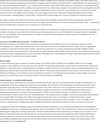Born too soon: care during pregnancy and childbirth to reduce preterm deliveries and improve health outcomes of the preterm baby
- PMID: 24625215
- PMCID: PMC3842748
- DOI: 10.1186/1742-4755-10-S1-S4
Born too soon: care during pregnancy and childbirth to reduce preterm deliveries and improve health outcomes of the preterm baby
Abstract
Pregnancy and childbirth represent a critical time period when a woman can be reached through a variety of mechanisms with interventions aimed at reducing her risk of a preterm birth and improving her health and the health of her unborn baby. These mechanisms include the range of services delivered during antenatal care for all pregnant women and women at high risk of preterm birth, services provided to manage preterm labour, and workplace, professional and other supportive policies that promote safe motherhood and universal access to care before, during and after pregnancy. The aim of this paper is to present the latest information about available interventions that can be delivered during pregnancy to reduce preterm birth rates and improve the health outcomes of the premature baby, and to identify data gaps. The paper also focuses on promising avenues of research on the pregnancy period that will contribute to a better understanding of the causes of preterm birth and ability to design interventions at the policy, health care system and community levels. At minimum, countries need to ensure equitable access to comprehensive antenatal care, quality childbirth services and emergency obstetric care. Antenatal care services should include screening for and management of women at high risk of preterm birth, screening for and treatment of infections, and nutritional support and counselling. Health workers need to be trained and equipped to provide effective and timely clinical management of women in preterm labour to improve the survival chances of the preterm baby. Implementation strategies must be developed to increase the uptake by providers of proven interventions such as antenatal corticosteroids and to reduce harmful practices such as non-medically indicated inductions of labour and caesarean births before 39 weeks of gestation. Behavioural and community-based interventions that can lead to reductions in smoking and violence against women need to be implemented in conjunction with antenatal care models that promote women's empowerment as a strategy for reducing preterm delivery. The global community needs to support more discovery research on normal and abnormal pregnancies to facilitate the development of preventive interventions for universal application. As new evidence is generated, resources need to be allocated to its translation into new and better screening and diagnostic tools, and other interventions aimed at saving maternal and newborn lives that can be brought to scale in all countries.
Figures



References
-
- Howson CP, M K, Lawn JE, editor. March of Dimes P, Save the Children, WHO. Born Too Soon: The Global Action report on Preterm Birth. Geneva: World Health Organization; 2012.
-
- DM H. Preterm birth. Clinical evidence. 2011. p. pii:1404.
-
- Blencowe H, Cousens S, Mullany LC, Lee AC, Kerber K. et al. Clean birth and postnatal care practices to reduce neonatal deaths from sepsis and tetanus: a systematic review and Delphi estimation of mortality effect. BMC Public Health. 2011;11(Suppl 3):S11. doi: 10.1186/1471-2458-11-S3-S11. - DOI - PMC - PubMed
Publication types
MeSH terms
LinkOut - more resources
Full Text Sources
Other Literature Sources
Medical
Molecular Biology Databases
Research Materials

